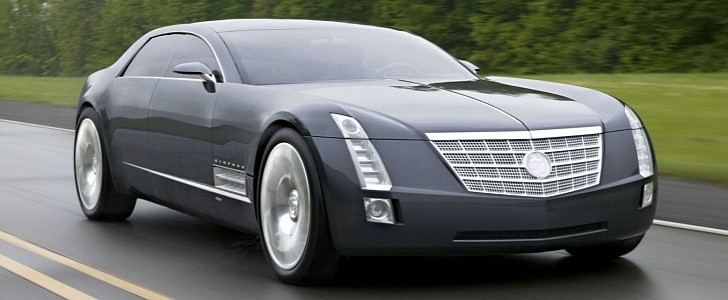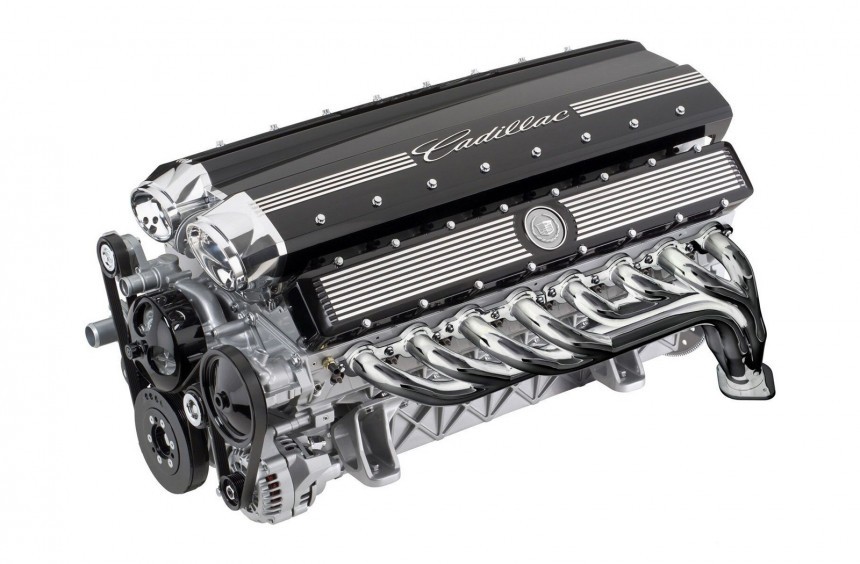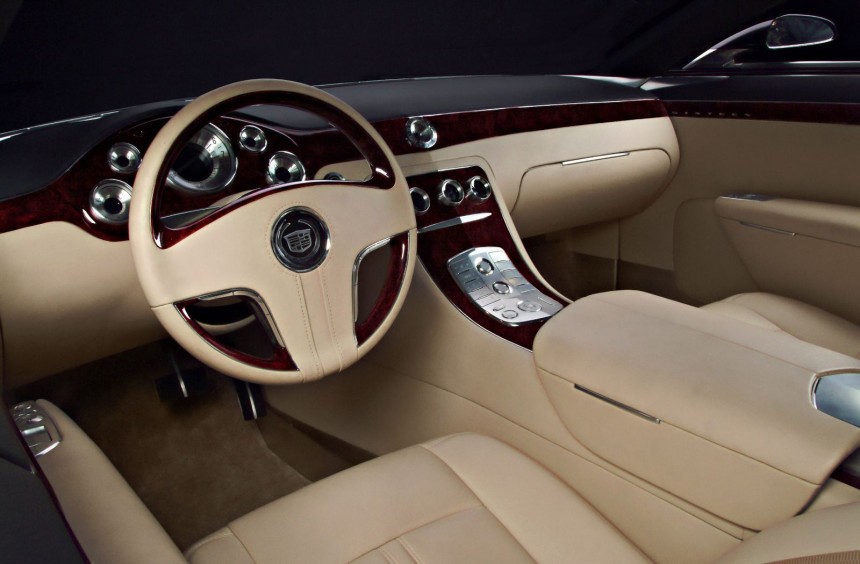Eighteen years ago, Cadillac introduced the amazing Sixteen Concept as a homage to the company’s 1930s flagship. It looked like it was designed for Bruce Wayne and hid a monstrous sixteen-cylinder engine under its butterfly-opening dual-panel hood.
In the era of electrification and ICE downsizing, it’s almost a sin to think about a V16 engine made for anything other than a ship, plane, or locomotive. Yet, they exist and were used in passenger cars in the past.
The first such vehicle to use one was the Cadillac V-16, introduced in January 1930. It was one of the classiest and most expensive cars of the era, with only 4,000 units built until 1940. It is considered one of the best automobiles of the prewar period, and in its honor, GM created the futuristic Sixteen concept, which stunned everyone when it was unveiled at the 2003 Detroit Auto Show.
Like its ancestor, it was absolutely huge and featured a sharp yet subtle design, with many pointing out that this was exactly how a Cadillac should look like. It sat on huge 24-inch polished aluminum wheels, had no B-pillars or door handles, and under its power-operated hood panels, a gargantuan sixteen-cylinder was fitted.
Designed by Katech Inc. and built exclusively for this daring concept, the 32-valve monster displaced 13.6 liters (829 cu in) and didn’t use any form of forced induction. It was based on the GM gen 4 LS architecture and employed fuel-saving Displacement on Demand technology, which shuts down half of the cylinders during most driving conditions and reactivates them when full power is needed.
The engine was linked to a modified 4-speed Hydra-Matic 4L85-E transmission and could produce up to 1,000 hp (745 kW) and 1,000 lb-ft (1,355 Nm) of torque. Because it was an experimental vehicle, the top speed was electronically limited to just 40 mph (64 kph), so we’re left to wonder just how fast the car could go if it were mass-produced.
Apart from the exterior design and the colossal powerplant, the Sixteen stood out thanks to its amazing interior. The hand-stitched, Tuscany leather upholstered seats were huge and extremely comfortable, and the high-end luxury features included a dashboard-mounted Bvlgari clock and a Cadillac logo carved out of solid crystal that adorned the steering wheel.
The spectacular car also employed an active all-wheel steering system called Quadrasteer. Like similar present-day systems, it worked by steering the rear wheels in the opposite direction to those in the front at low speeds resulting in a tighter turning radius. In contrast, at high speeds, all wheels steered in the same direction for superior control and stability.
Ever since its release, the breathtaking concept was the subject of many rumors about a potential limited-production run, but GM never intended to release it. The Sixteen was purely a show car created to debuted a new design language that inspired many subsequent Cadillac models, such as the second-generation CTS launched in 2008.
The engine wasn’t further developed, much to the disappointment of many large-displacement enthusiasts. Still, the Displacement on Demand technology debuted a year later on some GM models and continues to be used today.
The first such vehicle to use one was the Cadillac V-16, introduced in January 1930. It was one of the classiest and most expensive cars of the era, with only 4,000 units built until 1940. It is considered one of the best automobiles of the prewar period, and in its honor, GM created the futuristic Sixteen concept, which stunned everyone when it was unveiled at the 2003 Detroit Auto Show.
Like its ancestor, it was absolutely huge and featured a sharp yet subtle design, with many pointing out that this was exactly how a Cadillac should look like. It sat on huge 24-inch polished aluminum wheels, had no B-pillars or door handles, and under its power-operated hood panels, a gargantuan sixteen-cylinder was fitted.
The engine was linked to a modified 4-speed Hydra-Matic 4L85-E transmission and could produce up to 1,000 hp (745 kW) and 1,000 lb-ft (1,355 Nm) of torque. Because it was an experimental vehicle, the top speed was electronically limited to just 40 mph (64 kph), so we’re left to wonder just how fast the car could go if it were mass-produced.
Apart from the exterior design and the colossal powerplant, the Sixteen stood out thanks to its amazing interior. The hand-stitched, Tuscany leather upholstered seats were huge and extremely comfortable, and the high-end luxury features included a dashboard-mounted Bvlgari clock and a Cadillac logo carved out of solid crystal that adorned the steering wheel.
Ever since its release, the breathtaking concept was the subject of many rumors about a potential limited-production run, but GM never intended to release it. The Sixteen was purely a show car created to debuted a new design language that inspired many subsequent Cadillac models, such as the second-generation CTS launched in 2008.
The engine wasn’t further developed, much to the disappointment of many large-displacement enthusiasts. Still, the Displacement on Demand technology debuted a year later on some GM models and continues to be used today.












